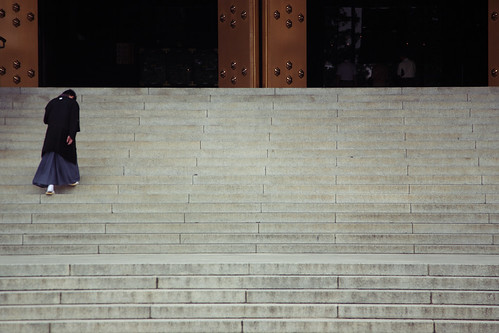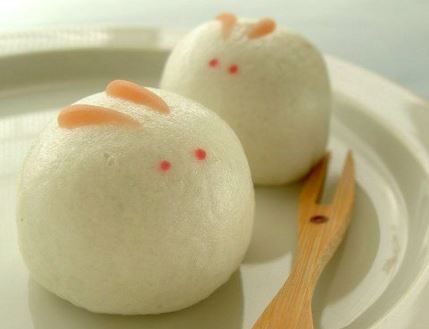The Problem with Hardcore Japanese Learning
Adam, you’ve gone soft. You used to be hardcore. You’d tell people they must learn all the kanji first. You’d tell people they must create their own flash cards. You’d tell people they must immerse as much as possible every moment of every day. You’d tell people that if they did this, they too could become fluent in less than 3 years. What happened to you?
For those who have been around for a while, or for those who left because they didn’t like my turn towards soft, what I talk about on Jalup and how I recommend studying (and the app I subsequently built off of these recommendations) has changed. What happened? What happened to the hardcore Adam?
Delivering Inspiration
Search anywhere on the internet (blogs, forums, YouTube, etc.) and you’ll find an overwhelming supply of hardcore learners (those who became fluent in Japanese by working their ass off in short periods of time). They share their success story learner methods and advice on how to achieve the same. This is how I started Jalup. This is how I continued for many years.
By doing this, you motivate people to realize the possibilities out there and get their ass into gear. For most of the 20th century, and even early 2000s, learning Japanese was a slow process that could take people decades plus to become fluent. Now you can do it in years that you can count on one hand. You don’t need to have Japanese relatives. You don’t need to go to Japan. You don’t need to be rich. You can do it all from the comfort of your home in your own country.
This is inspiring and provides a much needed “anyone can do it,” after a century long flood of “Japanese is impossible” and “Japanese is hard even for Japanese people.” Now, all you need is the discipline and drive. Follow X, Y, and Z techniques using A, B, and C resources and you will be anime cruising in no time.
The Unrealistic Standard
The internet is home of the loud minority. This is extremely important to keep in mind, because the hardcore learner that makes it to fluency is in the minority. 5%? 1%? Maybe less.
But everyone has the potential to become a hardcore learner. They just need more motivation to work harder. I’ll show them the way.
– Naive Adam (Late 2000s)
People can study hard. That’s great. But becoming a hardcore learner is not possible for most people, and it has nothing to do with motivation or discipline.
When I was studying Japanese hardcore, I was 21-23 years old, living alone. I was single. I didn’t have many financial obligations, a partner or children. I had a mountain of free time, the freedom to do anything I wanted, and was full of energy. While I had my share of life struggles (comparatively), I had the perfect environment to become a hardcore learner.
I don’t say this to undermine the intense amount of work people in similar situations to the above have put into it. Anyone who can become fluent with little time, regardless of positive environmental boosts, still deserves all the credit and respect for what they’ve accomplished.
However, for people reading their stories, you need to know that they may be in a much better position than you for this type of challenge. And even if despite a terrible situation/environment full of obstacles they still pulled off a hardcore victory, you aren’t them.
Remember This
Before you beat yourself up, comparing yourself to others‘ greatest feats:
- You don’t need to be hardcore to become fluent. Whether it takes you 1, 5, 10, or 20 years to become fluent: fluent is fluent.
- Even if you want to study hardcore, it might be beyond your reach due to a long list of factors outside of your control. Know yourself and study within your realm.
- Most people who study Japanese are not hardcore. Most people who become fluent in Japanese weren’t hardcore, despite what you read on the internet.
- Hardcore learners are not bad – they are not the enemy. They are good. They break through all kinds of barriers with innovative new methods and techniques, and offer to share them with you. But they are not and should not be the standard.
Founder of Jalup. iOS Software Engineer. Former attorney, translator, and interpreter. Still watching 月曜から夜ふかし weekly since 2013.






With experience comes wisdom. This is such wise advice, and it comforts me to know that whatever I’m able to do is enough. Thanks.
Yes – looking back at older posts here, I sometimes find myself disagreeing with myself.
Great article!
While I am definitely more on the hardcore side, I never want to tell people it’s the only way because I know I have a very unique set of circumstances. The biggest determining factor that gets people to fluency is persistence, and second is self-awareness of your preferred learning methods and what motivates you to learn. That’s my opinion, at least :)
I fully agree. Persistence is how you make it out alive :)
Wow sometimes I think I am hitting it hard doing 10-20 cards a day everyday for about a year and a half now. But looking at that old post about Adam doing 40 a day for a year is crazy! Haha
I am counting on what Victoria said “The biggest determining factor that gets people to fluency is persistence, and second is self-awareness of your preferred learning methods and what motivates you to learn.”
If that is true I should make it. I think I have both of those things nailed now more than ever. I look forward to the studying I can do everyday and have pretty much cracked my personal motivations and methodologies. Now just to see how long it takes me.
It also helps to remind myself that fluency is always a gradient. I may not be wholely fluent at all yet but I can still do many things I once saw as insurmountable (follow shows in Japanese, read manga, have basic Japanese conversations).
10-20 new cards a day, every day, for a year is hitting it very hard. Don’t use my outlier example to diminish your great effort :)
I think Victoria is definitely correct.
And yes – you don’t need to reach the final goal (which will become even more vague as you get closer to it) to enjoy all the things you wanted to do when you first started.
I tried the hardcore approach with 20 cards a day and 20-30 cards on wanikani. I failed twice that way and burned out ? now I take my time and try to do 10beginner cards a day and only a few new wanikani cards beside my reviews. So far it works out fine. I also decided to reduce the lesson count if I encounter more then 2 really difficult cards which I have problems to remember. That way I wont get overwhelmed.
Obviously the hardcore approach dosen‘t work for me ^^ bit jalup works great and I‘m able to recall and understand the new stuff faster and faster.
And it‘s always nice to see cards with kanji I already learned in wanikani and vice versa.
I’m waiting for someone who wants to offer a guest post here on combining Jalup with Wanikani :) It seems a lot of people have found success with that.
You bring up a great point, studying hardcore is fine (and even amazing) for some people. But for many others, it can lead to a bad outcome.
Well, if I reaching some higher levels over at wanikani I might consider applying for a guest post ;)
I will keep this in mind for the future :) and until then I slowly but surely keep progressing on my japanese journey
This is I think one of the most inspiring articles you’ve written. While I think we probably all go through some sort of hard core spurt to either get us started, or get over some difficult hurdle – the real key I think is to find a way to stay motivated, persistent and consistent every day for short periods of time over a long period of time. Thanks for reflecting and writing this!
You are right – we all start with that fierce initial energy (otherwise we wouldn’t have chosen Japanese in the first place). But how we play the long game, and make sure it is the right game for us, is what sets us up for victory or defeat.
Do you still do Anki?
Mostly for programming now. Maybe occasionally will check in and catch up on old Japanese reviews that start to build up.